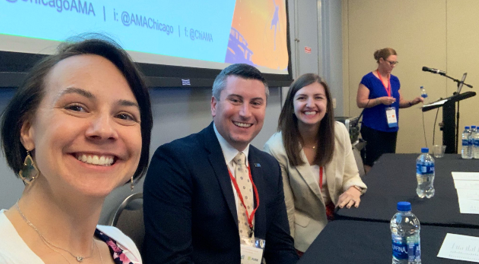 What does it mean to be customer-centric? It means an organization’s approach to business is designed to create a positive experience for the customer. Customer-centricity is a mindset, and you can apply the same thinking to your content strategy. As discussed in my previous blog post, there are four key characteristics that true customer-centric content teams possess:
What does it mean to be customer-centric? It means an organization’s approach to business is designed to create a positive experience for the customer. Customer-centricity is a mindset, and you can apply the same thinking to your content strategy. As discussed in my previous blog post, there are four key characteristics that true customer-centric content teams possess:
- Design content to drive customer success, not the product or service
- Customer empathy runs deep and so does their knowledge
- CX drives the data strategy; channel metrics are support
- Personalize for the right reasons (see numbers 1-3)
Recently, ComBlu led a panel at the AMA #BrandSmart Conference to discuss the value of being customer-centric with an expert panel of B2B and B2C marketers from the Big Ten Conference, CompTIA and TransUnion.
The panel shared best practices learned through deliberate experimentation. Though they had very different roles and KPIs, there were common guiding principles they all shared when it came to engaging audiences with content.
- Audience targeting – it’s complicated. The panel shared their challenges about engaging a multigenerational fan base and how and where different segments consume content. On the B2B side, the focus was on ways to effectively reach multiple decision-makers and companies in different growth stages. The learning here was that in both B2B and B2C, actively researching and extrapolating the right customer insights is critical to creating the right content in the right format through the best channels for each segment.
- Storytelling still reigns supreme. While they take many forms, stories are the cornerstone of compelling content programs. What our panelists found best elevated their storytelling were:
- Authenticity – stories in the customers’ own voice
- Quirky (audience-specific) humor
- Behind the scenes looks – an insider’s perspective
- Evocative content
- Great visuals
- The importance of being earnest. The panelists stressed that at the end of the day, it’s about staying true to your brand and adding credibility to your story. That is how you build connections with and maintain the trust of your audience.
- Connect the dots. Find ways to connect the customer experience along the funnel. There was an impactful case study on the importance of an aligned sales and marketing organization that worked to bridge the gap in the customer journey through content. Key takeaways for this ‘marriage to work’ were patience and data.
- Define and measure success. It is critical for our experts to understand consumption preferences and specifically the different engagement behaviors and expectations of their audience segments. Here the panelists reinforced the need to use everything at their disposal to measure success, identify strengths and shortfalls and divine insights to inform what’s next.
These three extremely smart people below made my job much easier!

Photo credit @KellyCulinarian. From left to right: Kerry Kenny, Assistant Commissioner Public Affairs Big 10 Conference| Kelly Stone, Global Social Media Director, CompTIA | Colleen Thiry, Content Strategy Manager, TransUnion | Jenny Voisard, Senior Consultant, ComBlu
My biggest takeaway from our discussion was that it didn’t matter the diversity of the panel or the unique perspectives they brought to the room. Customer-centric principals can apply to B2B and B2C marketers in companies large and small across all industries.
My next stop is the Digital Marketing Summit in Denver. I am looking forward to connecting with peers and learning some new thinking around customer experience and what it takes. As always follow on @JennyMakesWaves.

Senior Consultant
Jenny is a digital content strategist, who leads customer-centric engagements that focus on understanding B2B buying behaviors and developing custom roadmaps.
Her expertise is creating buyer personas and mapping digital content journeys to assess the multi-channel user experience. She helps clients operationalize plans across workstreams and identifies processes to create efficiencies in marketing operations. Jenny also has extensive time under her belt developing and managing customer advocacy programs and community building.
She has helped a diverse group of organizations including Cisco, VMware, Verizon, Microsoft, Dell, BMO Harris, Capital One and many others become more customer-centric.

